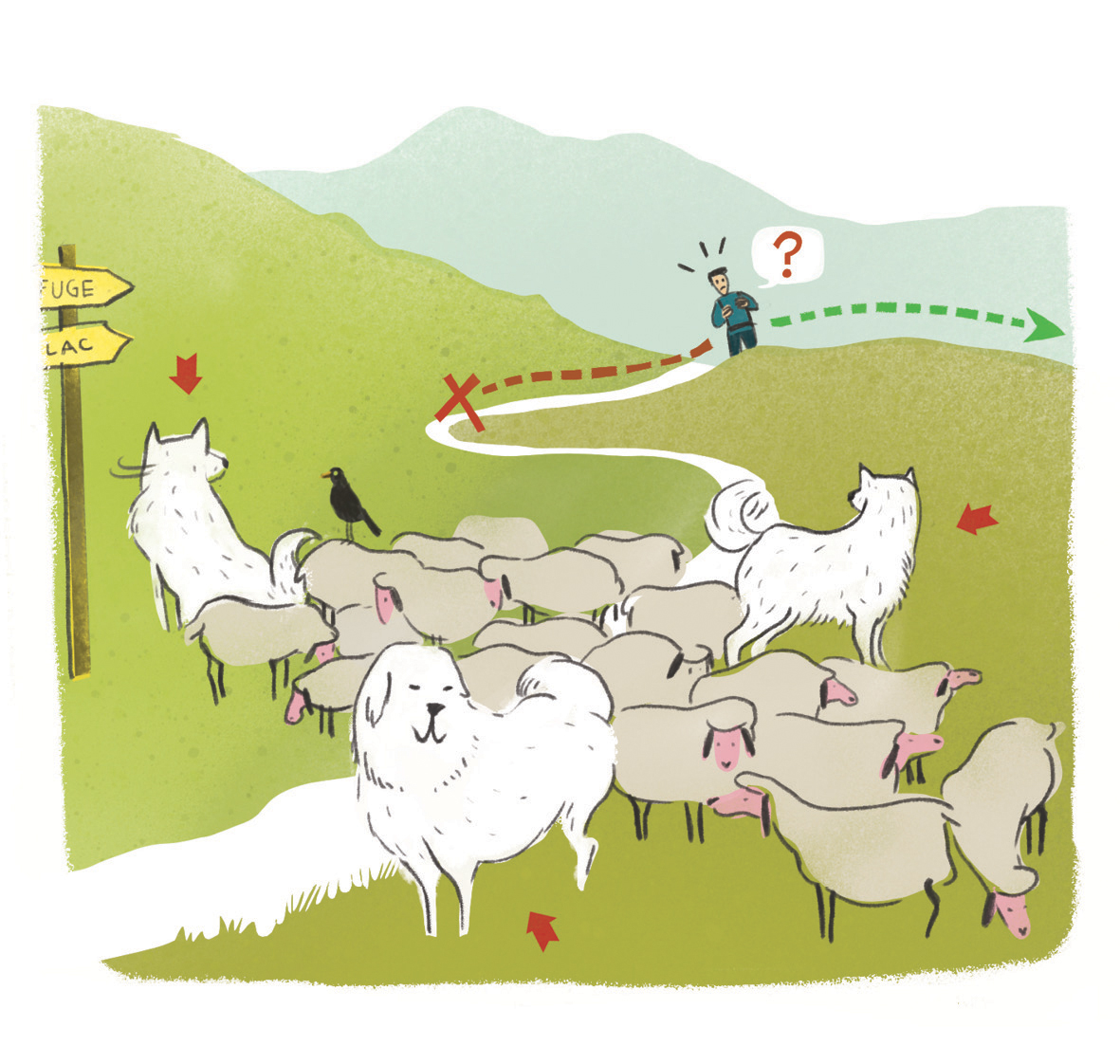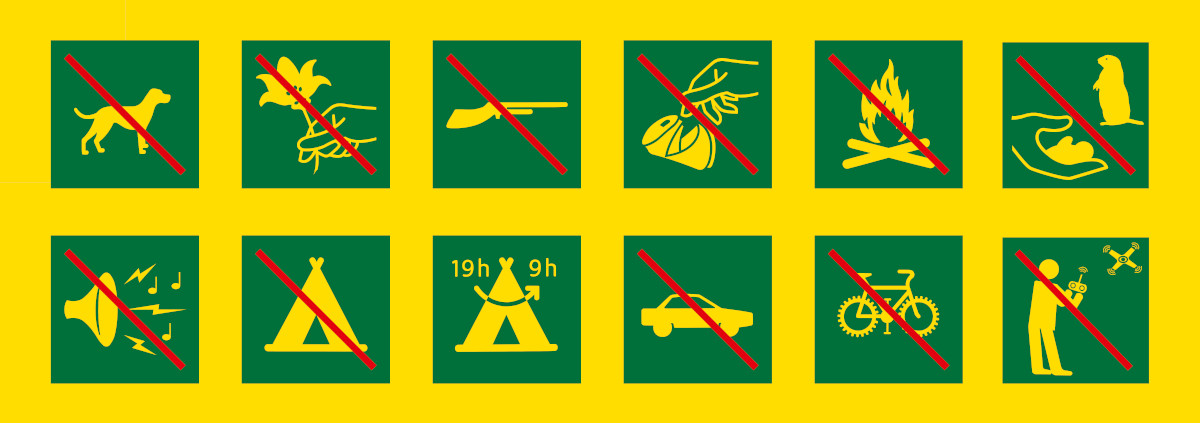The Saut du Laire
"On this warm June evening, I cross the Charnières plateau. I notice a strange shape in the middle of the prairie that is most full of flowers. No, it is not a marmot. I approach, hidden by the alders hanging over the Drac. A perfect lotus position, in the simplest of clothing but respecting decency and decorum, thanks to square of material, a man is meditating. A childlike smile lights up his face."
Daniel Briotet, park ranger in Champsaur
11 points of interest
 History
HistoryPrapic Church
Dedicated to Saint-Anne, Prapic Church dates back to the 1860s. It was built following the request of the inhabitants for a place of worship, who were faced with the hazards of winter and the distance from the parish church in Orcières. On the stained glass choir window, you can admire the portrait of Prapicois: Jean Sarrazin (1833-1914), nicknamed the «the poet of the olives", a different poet from that in the tomb ... Can you find it?
 Architecture
ArchitecturePrapic Hamlet
Surrounded by vegetable gardens, piles of stones and mown terraces the village nestles on the banks of the Drac and gives the best land over to agriculture. The typical house is most often perpendicular to the slope, based on an architecture created from materials collected locally and showing great intelligence in its elaboration. From course plasterwork to the delicacy of walnut wooden doors, shale roofing with gables made from plaited alder, this is the architectural vocabulary that punctuates your visit.
 History
HistoryRunning water
Running water came to Prapic in 1924. The first pipes were made from metre long sections, hollowed out trunks of larch. Their fitments probably did not enable all the water collected from the six village fountains to be transported!
 Water
WaterThe Drac Noir
This denomination is due to the nature of the terrains that it crosses: the limestone is very sensitive to erosion and the metamorphic rocks in Champoléon valley (Drac Blanc) darken the waters of the river Drac in this way. Bouncing from waterfalls to pools, opening up a passage through the riverside alders, the Drac expresses its nature as a mountain torrent. Brown Trout, White Throated Dipper and delicate ephemerals reveal themselves to the attentive observer.
 Fauna
FaunaMarmot
If you are patient, you will probably be lucky enough to discover it on the Charnière plateau whose prairies it particularly appreciates, which sometimes poses a problem to the farmer mowing there. Even so, they do represent an undeniable attraction in the valley. Do not be fooled by their easy going appearance, they are wild animals who fight for survival and battles between males can be fierce.
 Flora
FloraHay Fields
These natural prairies have never been cultivated. You can find a cavalcade of flowers growing freely. From this botanical diversity flourishes a multitude of insect species especially butterflies, who find an environment favourable to their development. Also, the hay they produce has a very high nutritional value. Maintaining the equilibrium of these environments is essential.
 Flora
FloraAsphodel
Asphodels blossom on the old hayfields. They open out from the bottom to the top over the course of July. It is for this reason that flowers at the base of the flowering stem may go to seed while the flowers at the top are still in bud. The long narrow leaves that grow up from the bottom of the stem early in the spring have given it the nickname "Dogs' leek". Vernacular heritage
Vernacular heritageSmall stone walls and stone piles
Creating land from the mountain rocks, this is the combat that the mountain-dwellers have carried out since Antiquity. These piles of stones are the witnesses to the time when numerous children piled up stones so that their families could grow food on the conquered land. The family plot, bordered by walls, was ready to be mowed. The Park participes in the maintenance of this inheritance.
 Architecture
ArchitectureSaulce Chapel
You will be able to see it from the first bends up to the Charnières plateau. It is characterized by its apse forming a stem post whose bulk protects the unique roomed vaulted edifice from avalanches. Built from stones from the site, its lime mortar is filled with earthy grit taken from the immediate environment.. It resists the ravages of time and natural phenomena.
 Geology and geography
Geology and geographyGlacial Relief
The polished rocks that you find just after the walkway are traces of the passage of quaternary glaciers. These are striped; stones once set in the ice, carried by glacial movement have strongly marked them. The flat bottomed valley with a glacial cross cliff is another characteristic of this landscape modelled by glaciers.
 Pastoralism
PastoralismPastoral Cabin at Saut du Laire
Protected from avalanches by a big rock, this small cabin shelters the shepherd from June to the end of July. In order to exploit the supply of grass as it grows, another cabin is situated above the bar which closes the valley completing the equipment of the pasture. For the tranquility of the shepherd, it is best to observe the cabin from a distance.
Description
From the car park, at the entrance to Prapic hamlet, go up in the direction of the hostels. At the fork (signpost), go right. The track follows the right bank of the Drac going up to the Charnières plateau. At the oratory, turn left to cross the plateau. Climb the bends which lead to the Saulce chapel. Stay on the right bank to reach the Saut du Laire walkway which will give you access to the eponymous valley, which is the goal of this hike. Return using the same itinerary in the opposite direction.
- Departure : Prapic
- Towns crossed : Orcières
Forecast
Altimetric profile
Sensitive areas
Golden eagle
- Impacted practices:
- Aerial, , Vertical
- Sensitivity periods:
- JanFebMarAprMayJunJulAug
- Contact:
- Parc National des Écrins
Julien Charron
julien.charron@ecrins-parcnational.fr
Recommandations
This itinerary which is suitable for children is best if you avoid setting off too late. Depending on meteorological conditions, vigilance is necessary when crossing the steep slopes under the Saulce chapel.
 In mountain pastures, protection dogs are there to protect the herds from predators (wolves, etc.).
In mountain pastures, protection dogs are there to protect the herds from predators (wolves, etc.).
When I hike I adapt my behavior by going around the herd and pausing for the dog to identify me.
Find out more about the actions to adopt with the article "Protection dogs: a context and actions to adopt".
Tell us about your meeting by answering this survey.
Information desks
House of Champsaur
, 05260 Pont-du-Fossé
Information and documentation, temporary exhibitions. Sale of products and works of the Park. In the same space, home office Tourist High Champsaur. Free admission. All animations of the Park are free unless otherwise stated.
Transport
Coach from Gap to Orcières.
Access and parking
In Orcières village, take the direction to Prapic hamlet where the car park is situated.
Parking :
Accessibility
Source

Report a problem or an error
If you have found an error on this page or if you have noticed any problems during your hike, please report them to us here:


